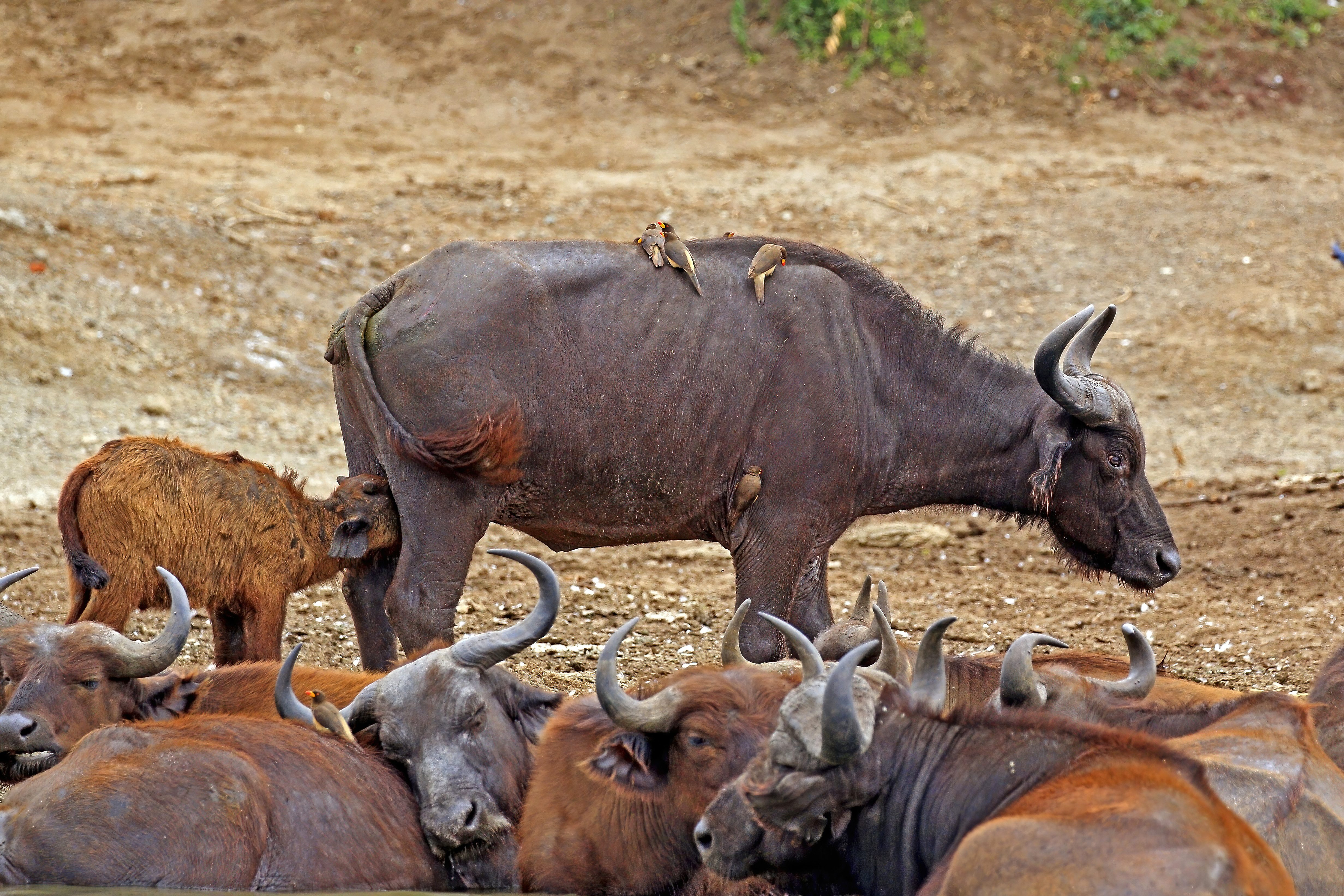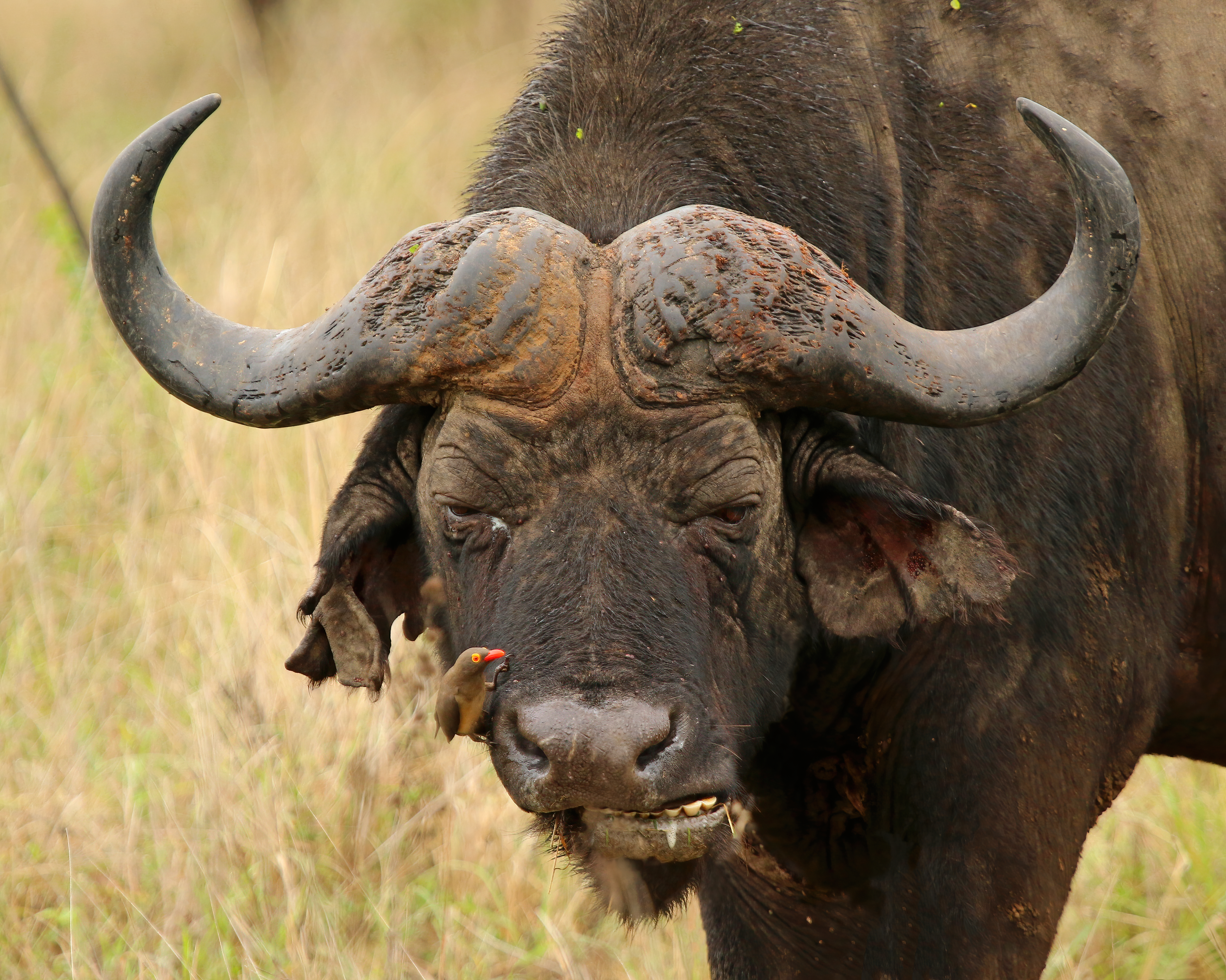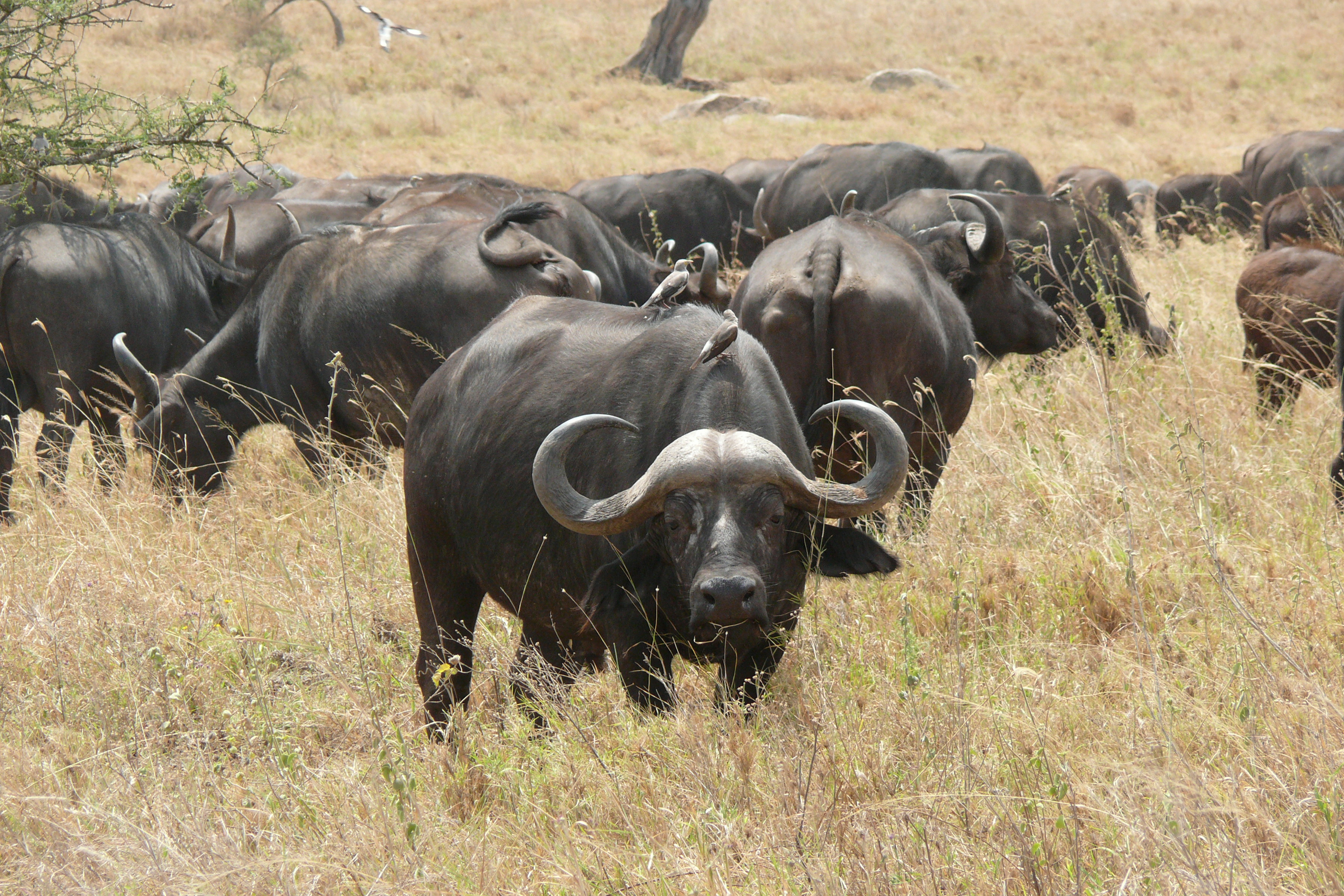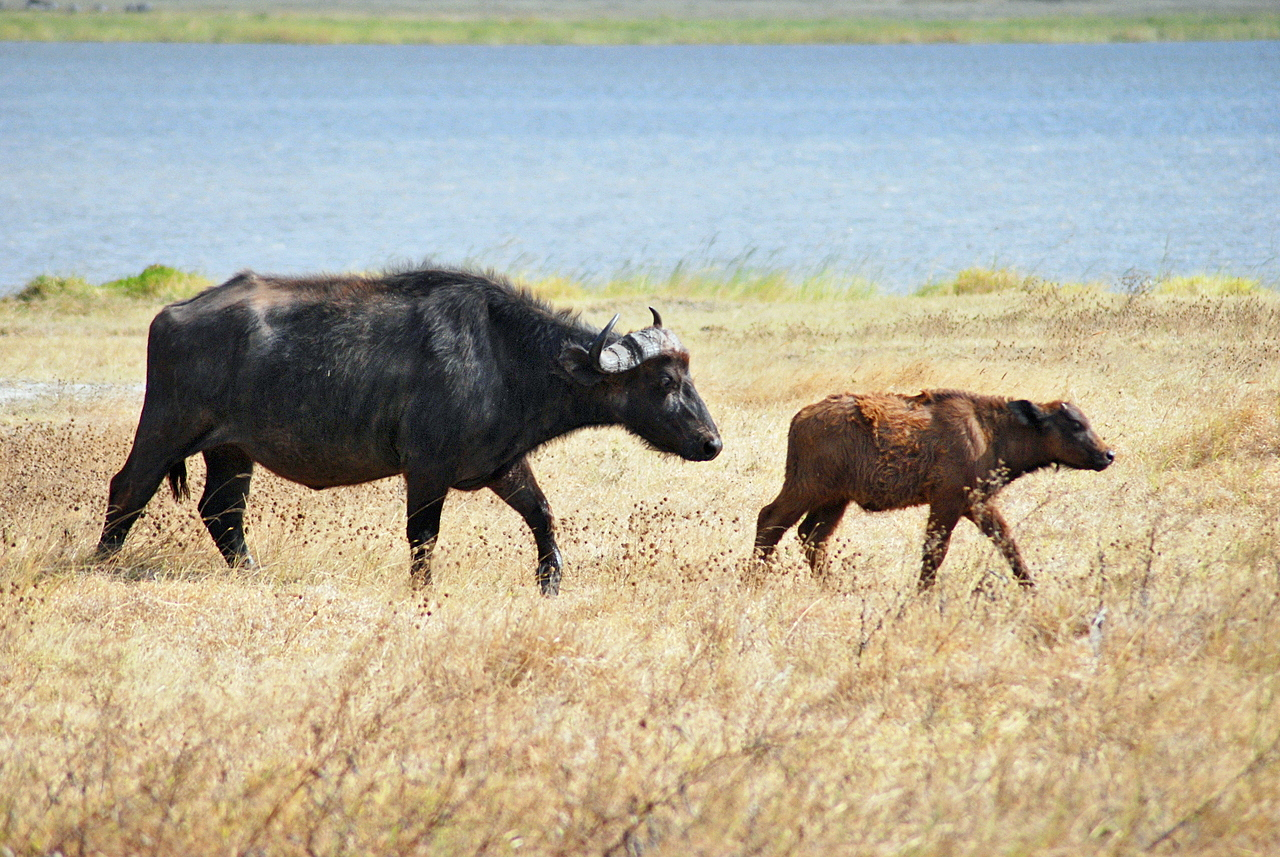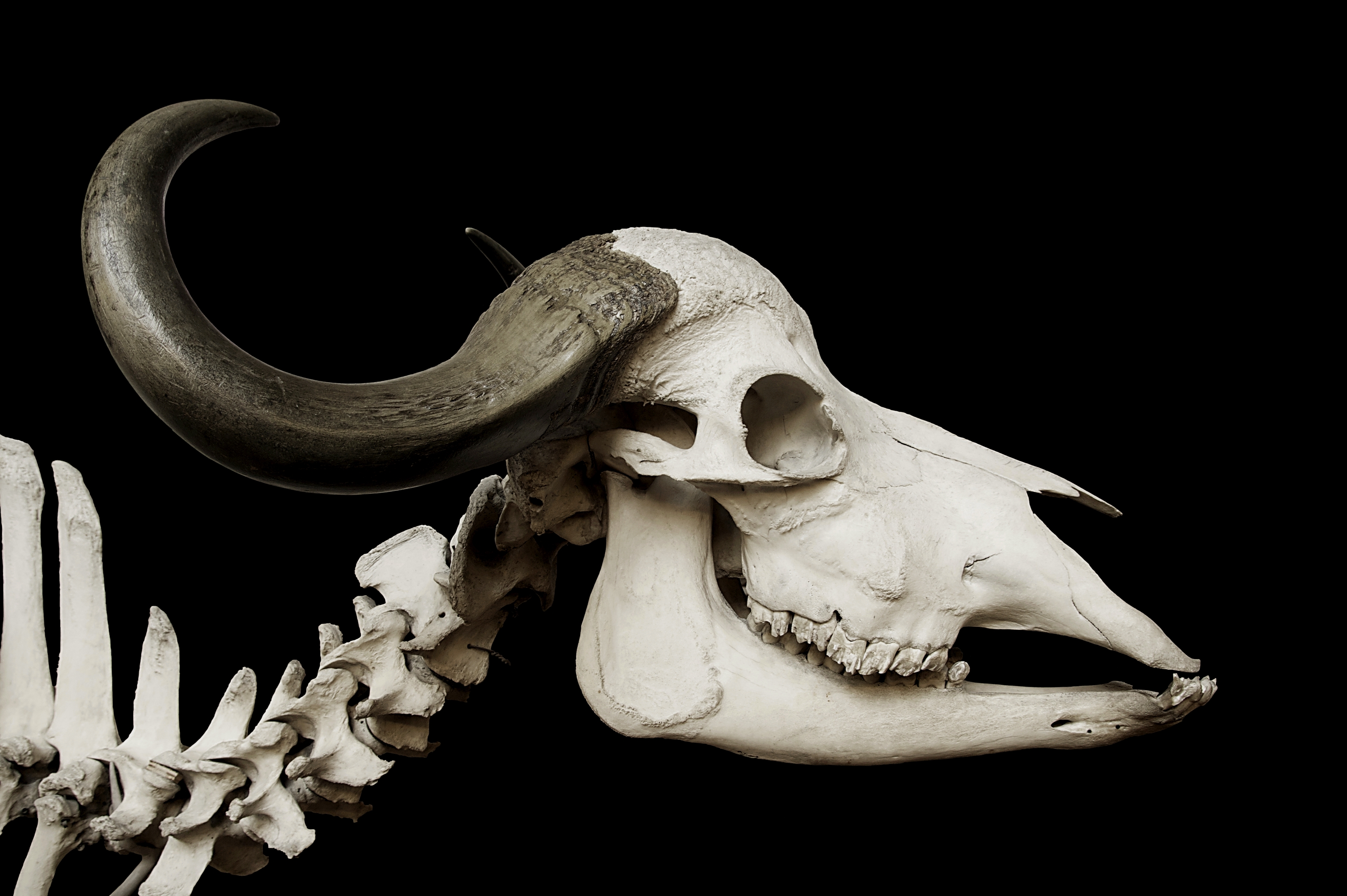African buffalo
Enlarge text Shrink textThe African buffalo (Syncerus caffer) is a large sub-Saharan African bovine. There are five subspecies that are recognized as valid by most authorities: Syncerus caffer caffer, the Cape buffalo, is the nominotypical subspecies, as well as the largest, found in Southern and East Africa. S. c. nanus, the forest buffalo, is the smallest subspecies, common in forest areas of Central and West Africa S. c. brachyceros, the Sudan buffalo, a smaller version of the Cape buffalo, found in the drier, northern areas of Central and West Africa. S. c. aequinoctialis, the Nile Buffalo, sometimes considered identical to the Sudan buffalo, found in the drier, northern areas of East and Central Africa. S. c. mathewsi, the mountain buffalo, a disputed subspecies from the Virunga Mountains in Central Africa. The adult African buffalo's horns are its characteristic feature: they have fused bases, forming a continuous bone shield across the top of the head, referred to as a "boss". The African buffalo is more closely related to other buffalo species than it is to other bovids such as American bison or domestic cattle, with its closest living relative being the Asian water buffalo. Its unpredictable temperament may be part of the reason that the African buffalo has never been domesticated, which would also explain why the African buffalo has no domesticated descendants, unlike the wild yak and wild water buffalo which are the ancestors of the domestic yak and water buffalo. Natural predators of adult African buffaloes include lions, African wild dogs, spotted hyenas, and Nile crocodiles. As one of the Big Five game animals, the Cape buffalo is a sought-after trophy in hunting.
Read more on Wikipedia >
 Topic
Topic






